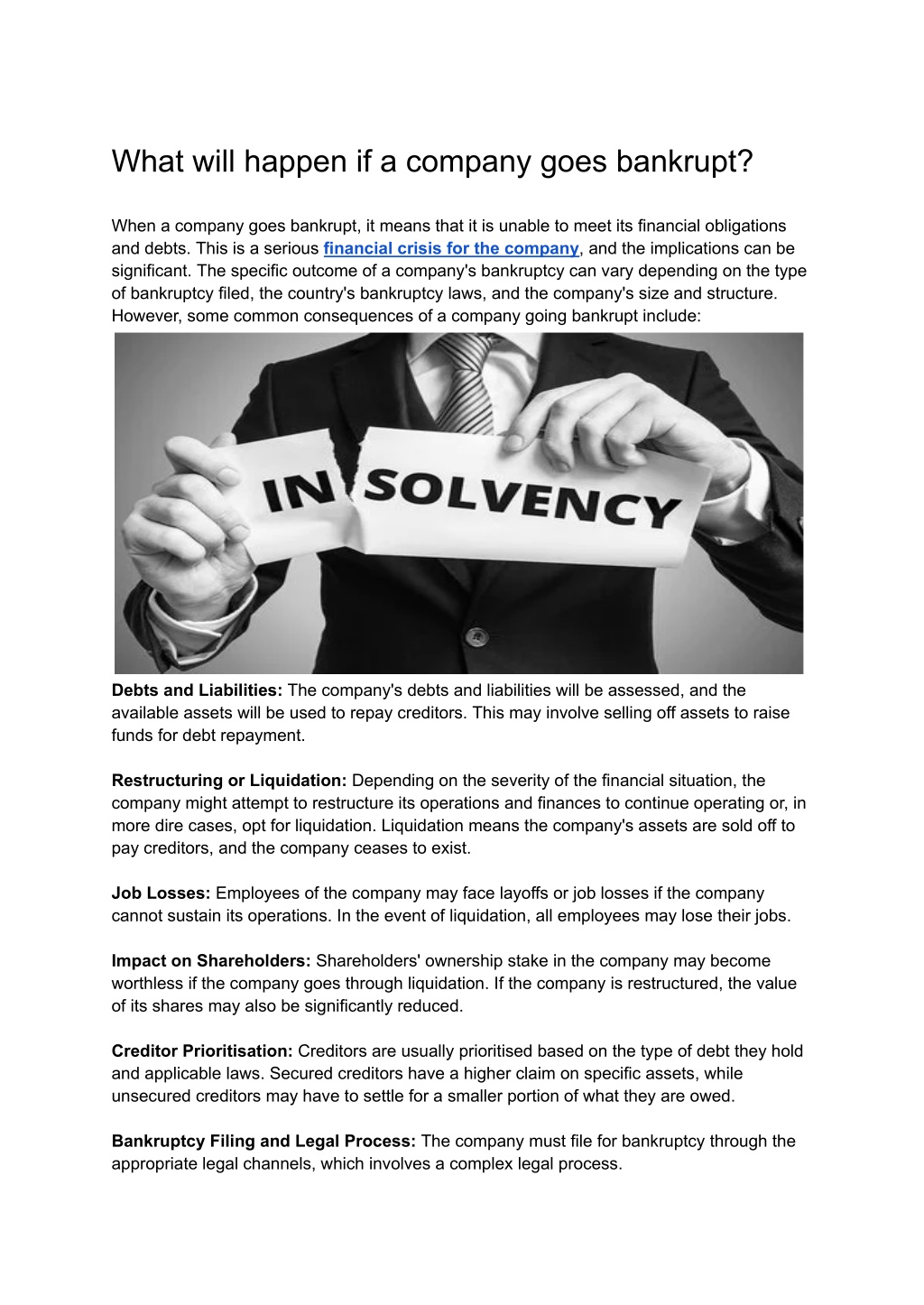Administration Staff and Liquidation: What Happens to Employee Redundancy and Pay When a Company Goes Into Administration
Administration Staff and Liquidation: What Happens to Employee Redundancy and Pay When a Company Goes Into Administration
Blog Article
Comprehending the Effects of Firm Liquidation on Staff Member Retention and Advantages

Effect on Work Safety
In case of firm liquidation, the influence on work protection can be considerable for staff members as unpredictability relating to future work develops. When a business enters into liquidation, employees deal with the overwhelming possibility of prospective job loss. This uncertainty can cause increased tension and anxiety among the labor force, influencing their spirits and efficiency.
Throughout the liquidation process, staff members may experience a series of emotions, consisting of worry, temper, and irritation, as they face the possibility of joblessness. The absence of quality surrounding the timeline of the liquidation and the destiny of their settings can create a sense of instability within the labor force.
Furthermore, staff members may likewise be worried about the condition of their benefits, such as health care insurance coverage, retirement strategies, and paid pause, during and after the liquidation process. The possible loss of these advantages adds one more layer of intricacy to a currently tough situation for workers.
Changes in Employee Perks

One usual modification is the reduction or removal of particular benefits to reduce costs and work out impressive financial obligations. For instance, employer payments to retirement may cease, leaving staff members to carry the full responsibility of conserving for their future. Health care benefits may be scaled back, resulting in greater out-of-pocket costs for clinical services.
Interaction becomes extremely important throughout this duration of transition. Employers must be transparent concerning the modifications, providing clear descriptions and assistance to assist employees browse through the alterations. Open discussion and assistance can help reduce stress and anxiety and unpredictability among the labor force, cultivating a much more favorable change experience in spite of the tough circumstances.
Retention Methods Post-Liquidation
Following the business liquidation, carrying out efficient retention methods is critical to safeguarding organizational talent and maintaining stability within the workforce. In times of uncertainty, employees may feel anxious about their future job safety and security and be extra likely to look for different job opportunity. To alleviate this threat, business must focus on open communication, providing transparency regarding the firm's scenario, and using support to employees throughout the transition duration.
One trick retention method post-liquidation is to focus on employee well-being and spirits. This can be achieved via normal check-ins, counseling services, and creating a favorable job environment. Furthermore, providing profession development possibilities and upskilling programs can improve worker motivation and involvement during challenging times. Identifying and awarding employees for their commitment and dedication can also cultivate a feeling of loyalty and devotion to the organization.
Additionally, developing a clear profession development path and setting realistic objectives can offer workers an orientation and function within the company (if a company goes into administration do i have to pay them). By purchasing employee advancement and proactively involving them in decision-making processes, companies can raise worker retention prices and build Read Full Report a resilient websites labor force post-liquidation
Legal Rights and Defenses
Throughout the after-effects of firm liquidation, it is critical to resolve the lawful civil liberties and securities available to employees to ensure a reasonable and certified process. It is essential for staff members to understand these rights and seek lawful recommendations if needed to navigate the intricacies of the liquidation process.
Additionally, in cases where a firm enters into liquidation, workers are frequently considered advantageous financial institutions, providing them higher priority in obtaining exceptional payments over various other creditors. This defense assists prioritize clearing up employee cases before various other monetary commitments are satisfied. Lawful safeguards exist to prevent unreasonable dismissals throughout liquidation, ensuring that terminations are lugged out according to established labor regulations. Comprehending these legal civil liberties and protections is essential for employees to protect their interests and seek appropriate option in the occasion of company liquidation.
Handling Financial Uncertainty
Navigating financial uncertainty can be a daunting difficulty for workers affected by business liquidation. Throughout such times, it is critical for staff members to analyze their existing financial scenario realistically.
Looking for monetary counseling or advice from professionals can use important understandings into taking care of debts, reorganizing monetary responsibilities, and why not try this out planning for the future. It is necessary for workers to stay notified regarding their privileges, such as severance plans or exceptional repayments, to guarantee they get what they are owed. Considering different employment options or job possibilities can assist bridge financial voids during this transitional period. By proactively resolving financial obstacles, employees can browse via the uncertainty brought on by firm liquidation with better durability and readiness.
Conclusion
In final thought, business liquidation can have considerable ramifications on employee job safety, benefits, and general health. It is crucial for organizations to apply retention approaches and give assistance to staff members throughout this unclear time. Recognizing lawful rights and protections can help mitigate the impact of liquidation on staff members. Dealing with economic unpredictability needs a positive method and communication from both employers and employees to browse through the challenges successfully.
When a firm deals with liquidation, the fate of its workers hangs in the balance, elevating vital questions concerning task safety and security, advantages, and long-term security. The effect of company liquidation on staff member retention and benefits is a multifaceted problem that demands a more detailed evaluation to recognize the full extent of its repercussions.
Browsing monetary unpredictability can be a complicated difficulty for employees affected by firm liquidation. By proactively attending to economic obstacles, employees can browse through the unpredictability created by business liquidation with better resilience and preparedness.

Report this page